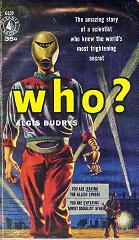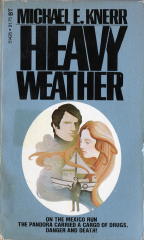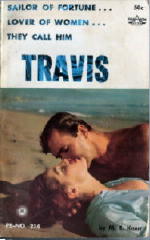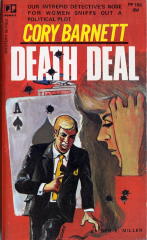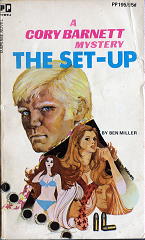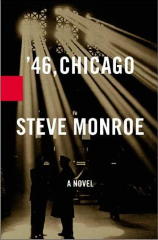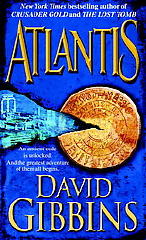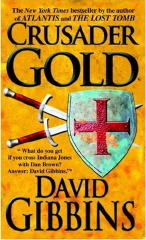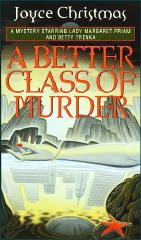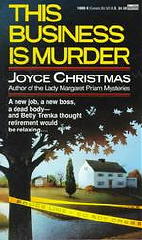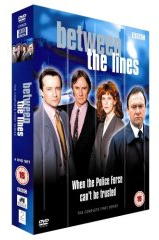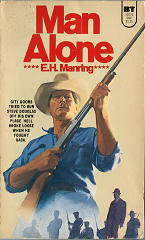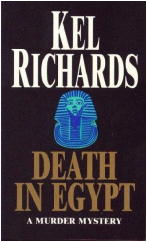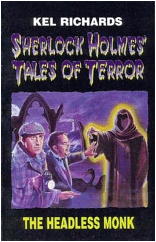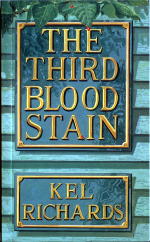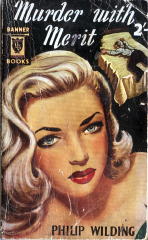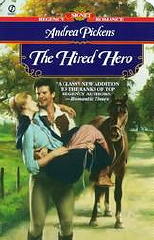EDGAR WALLACE – The India-Rubber Men.
Hodder & Stoughton, UK. hc, 1929. Doubleday-Doran Crime Club, US, hc, 1930. UK reprint paperbacks include: Pan 204, UK, 1952; Pan G605, 1964; 3rd Pan printing, 1967. Film: Imperator, 1938, as The Return of the Frog.
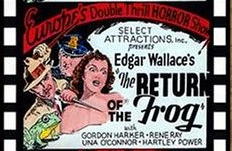
Of the film, the New York Times had this to say: “Following a string of mysterious robberies, Scotland Yard assigns its best detective, Inspector Elk, to bring the crooks to justice. The only clue the villains leave at the crime scene is a rendering of a frog. Still that is enough for intrepid Elk to solve the case, but not after considerable danger, excitement and comedy. This is the sequel to 1937’s The Frog.”
The latter, according to the Revised Crime Fiction IV, is a film based on:
The Fellowship of the Frog Ward, UK, hc,1925; Small Maynard, US, hc, 1923. Silent film: Pathe, 1928, as Mark of the Frog. Sound film: Wilcox, 1937, as The Frog.
But I digress. If the Times is correct in its description of the plot line of the film, it differed in several ways from the book, which I just finished reading. Inspector Elk is in the book, but he’s a relatively minor character, a colleague only of the major player, Inspector John Wade of the London Police, with his general jurisdiction being that of the waterfront area along the Thames.
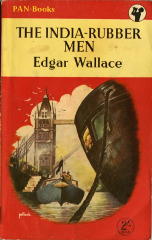
See the first Pan cover image for an illustration of that.
There are also no frogs in The India-Rubber Men, the book, only a powerful gang of burglars, bank-robbers, and thieves plaguing the river district, their distinctive m.o. being their garb: rubber masks, rubber gloves and crêpe rubber shoes.
See the second Pan cover image (below) for an illustration of them.
Nor is there much in the way of comedy, but movie-makers (as you know) have never hesitated for a moment to add funny stuff to their films.
I enjoyed the first half of the book, which in the first Pan edition consists of nearly 200 pages of small print. The writing is picturesque, with the reader traveling with Wade as he makes his way up and down the river looking for clues, and stopping in every so often at the “Mecca,” a disreputable officers’ club and lodging house whose only attraction is the beautiful Lila Smith, a ward of some sort of the proprietress, Mum Oaks.
The mysterious goings-on in and near the “Mecca” also suggest that a significant amount of criminal activity is going on there as well, as – without revealing anything to you of any great importance – it is.
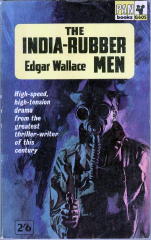
But with no great progress ever being made in coming upon the trail of the India-Rubber Men, eventually the investigation becomes tedious, if not outright stagnant. The telling of the tale is episodic, with major small crises (my words are deliberately chosen here) followed by lulls in which the coppers regroup and head their investigation off in yet another direction, while the bad guys seem directionless – but still very dangerous and deadly – in return.
It is as if the tale were originally told in serial installments, and perhaps it was, although I have no evidence in this regard, but the lack of any forward progress in the case, except in very small increments – three steps ahead to two back – is what contributes so greatly to the lack of thrills in the overall affair, at least from one reader’s point of view.
Let me be more specific. In spite of Inspector Wade’s being gassed in his own home, nearly drowned in a secret cellar under the “Mecca,” and being shot at from ambush, there is never any great sense of urgency on his part – even, mind you, when Lila is kidnapped from under his very eyes, figuratively speaking. He doesn’t blink an eye. A milder reaction could hardly be imagined.
Nor none on her part either. Nor, in fact, on the part of the titular gang of crooks and thieves, who are — when it comes down to it — little more than a squabbling bunch of incompetents, hardly worthy, as it turns out, of being called a gang.
But here’s what it is that’s missing. It’s any sign of intellectual curiosity on the part of the characters. Except for mere sparkles here and there, they’re as dull as ditch water, even the villains. Nor is there any great ingenuity or cleverness in the twists and turns of the plot. This is a deadly combination. There’s nothing much left in the telling of The India-Rubber Men to grab or hook the reader’s interest, at least not this one’s.
I no longer assign stars or letter grades to books anymore, but if I were to tell you that I skimmed the last third of the book, that may tell you all you need to know.
But for the record, Edgar Wallace published on the order of 24 novels or story collections in the same year, 1929. While perhaps known today to only a small coterie of fans, his reading public at the time was enormous. On that basis, I’m willing to call his writing an acquired taste, one that I’ve haven’t acquired myself — or perhaps it’s one that I’ve lost and haven’t yet re-acquired. On the basis of the first half of this book, while not making promises I cannot keep, it’s possible — just maybe — there’s a chance that I’ll try again.
